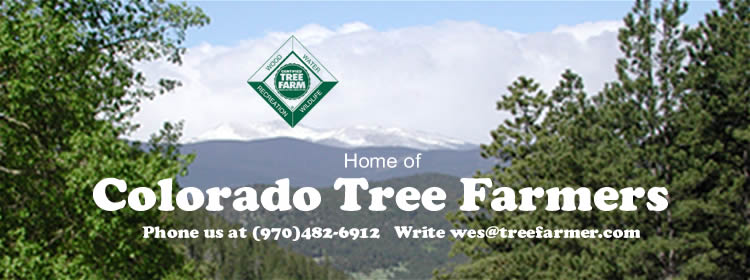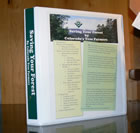|
Why
Should We
Many of Colorado’s mountain residents are becoming aware of the current state of our forests, and understand that our forests have become dangerously out of balance from their natural state. Due to the active suppression of wildfire and the increase of people living and recreating in our wildland ecosystem, Colorado’s forests are now at greater risk than previously thought. Overcrowded stands of trees competing for limited resources, especially in this time of drought, has resulted in a decline in the overall health of our forests. In many areas along the Front Range, there are more than five times the amount of trees than the natural and historic holding capacity of a healthy stand. The resulting wildfires, insect infestations, and disease outbreaks are becoming much more apparent with each passing year. Nature is attempting to reset its natural successional balance through insect and disease epidemics and wildfires. Again, this fact is magnified due to our current drought conditions. The more out of balance our forests become, the more drastic and potentially devastating this successional change can be. If we don’t make the choice to take care of our forests, our forest integrity will suffer. Our best option is to mimic natural forest regimes that have historically kept the ecosystem healthy. This can be done by the reintroduction of fire in controlled circumstances, the implementation of forest thinning, or both. It is the responsibility of all forest landowners to restore their land to a healthy, resilient, and natural state. In a forest consisting primarily of ponderosa pine, this often includes the removal of overcrowded, overtopped, and diseased trees while promoting the health and vigor of larger/healthier trees. In certain circumstances, foresters select to cut a few large trees in order to produce a healthy multiple-age forest or to create additional spacing between trees. Most forest treatments promote forest health by retaining multiple species and age diversity. Initially, the most important area to treat is the forest directly surrounding your home. We do this in order to create a wildfire defensible space. Defensible space is the area around a structure where fuels and vegetation are treated, reduced or cleared to slow the spread of wildfire towards a structure, stop a structure fire from reaching the wildland, and to give a margin of life safety to firefighters. A wildfire defensible space is not only natural and beautiful, but easy to create by following standard guidelines and/or utilizing professional guidance. Foresters treat each property as a unique setting with distinct characteristics and take landowner objectives into account before a plan is developed. A concise plan for your forest is important to create prior to marking or thinning in order to maximize forest heath, aesthetics, wildlife, and of course fire safety. Either landowners thin their property in a controlled fashion, or nature will take care of it through some sort of drastic measure. Forest thinning and management can be achieved through an educated and concise planning process and implementation. If we choose to wait and let drought, insect and disease, or catastrophic fire decide the fate of our forests, the forest dynamic and integrity, as we know it, will suffer. As always, the landowner is the ultimate decision maker and your objectives are always our first priority. We are here to help you, the forest landowner, achieve your goals in an educated and concise manner.
|




